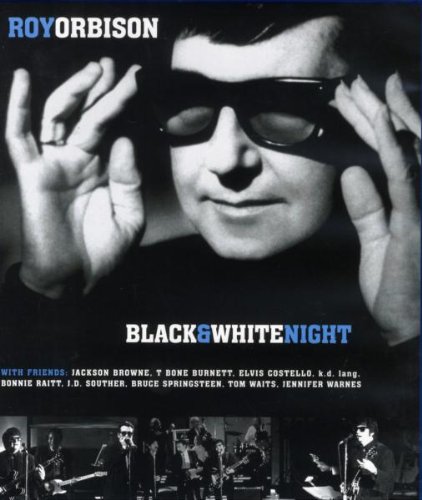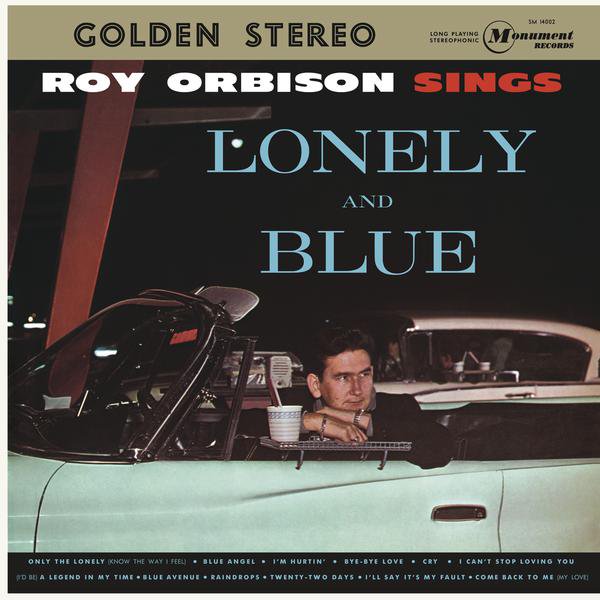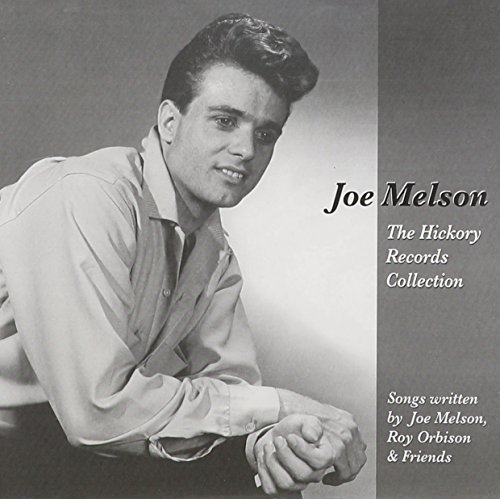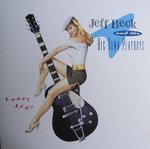Only The Lonely Vinyl Memories

Roy Orbison's Only the Lonely Vinyl Memories returns to 1960 and a song that screamed hit from the first few bars. A team of vocalists, The Anita Kerr Singers, gently croon "dum dum dum, dum-be-doo-wah" and other such syllables to an instantly memorable bittersweet melody, ending by singing the title phrase.
When Fred Foster, Monument Records founder and producer, signed Orbison in 1959 he gave him the support he needed. Roy Orbison wrote a lot of songs with themes of loneliness and yearning, but in many cases there was a lot more to them.
"Only The Lonely" is the song that, more than any other, defined Roy Orbison's career. Other than "Oh, Pretty Woman," it is Orbison's most famous and successful song.
It began as a fragmentary piece that songwriter Joe Melson had been working on before showing it to his new writing partner. After working it up a little further, they had unsuccessfully pitched the song to Elvis and the Everly Brothers, who’d already had a hit in 1958 with a track Orbison had written for them, Claudette.
Refusing to give up by this minor setback, Orbison, after a nudge from the Everly Brothers, decided to record the song himself at his third Monument session, in March 1960. Although Foster, lacking his own facilities, had to use RCA’s Studio B in Nashville to record Orbison, he didn’t cut corners on employing accomplished sidemen or on sound quality.
Crack Nashville session men such as Hank Garland and Harold Bradley on guitars, Bob Moore on Base and Floyd Cramer on piano played on the Only The Lonely vinyl memories session. Another Nashville stalwart, engineer Bill Porter used close-mic'ing techniques to get the best out of the backing vocals Orbison so loved to use - in this instance the Anita Kerr Singers, along with Joe Melson, co-author on Only The Lonely and several other Roy Orbison songs.
Only The Lonely - The Song That Kickstarted The Legend of Roy Orbison.

Only The Lonely, track one on the album Lonely and Blue, was
the song that kickstarted the legend of Roy Orbison. After the recording
was completed, "We all gathered around and listened to the playback,"
remembered Foster, "and with goosebumps on my arms, I turned to Roy and
said, "There's your big hit."
Let's take a peek at this video
from the Black and White Night special, filmed on Spetember 30, 1987,
approximately fourteen months before his death. I'll bet it just might
raise a few goosebumps on your arms too.
The backing band was the TCB Band which accompanied Elvis Presley from 1969 until his death in 1977: Glen Hardin on piano, James Burton on lead guitar, Jerry Scheff on bass, and Ronnie Tutt on drums. Enjoy this single performance of "Only The Lonely."
When Only The Lonely was wrapped up, it did much more than synthesize everything he had done before. Roy had taken all he knew and all he'd heard, then gone a step beyond.
Coming of age in the singles era, Roy Orbison was the master of compression. He could relate a short story, or establish a mood in under three minutes. Unlike most of his contemporaries, his music was very much his own. He wrote most of the songs and effectively co-produced his sessions. A new Roy Orbison record was an event--and rarely one that disappointed.
Only The Lonely Vinyl Memories - Those Pleasing Little Vocal Gimmicks...

The "doo-wah" was once merely a timid little background word
which vocal groups threw into a song occasionally just to let you know
they were there. But when Roy Orbison hit the scene with "Only The
Lonely," he brought with him a proud, different "doo-wah" — in fact a
whole new arrangement of "yeah-yeahs," "Dum-dum-dum-dumdy-doo-wahs," and
other pleasing little vocal gim-micks, artfully woven in and out around
the solo, in such a way as to produce a brand new effect. An effect
which, when combined with Roy's vocal gymnastics made magic. And the
magic was a hit record.
"F. Scott Fitzgerald once wrote, there
are no second acts in American lives. Had he lived long enough to
witness Roy Orbison, he wouldn't have written "There are no second acts
in American lives." Roy Orbison's life had a spectacular second act."
While most of his contemporaries
died dreaming of the Big Comeback, Roy Orbison died in the middle of
one. His best recordings are curiously timeless and placeless.
Joe Melson Styled A Part of Roy Orbison's Career.

It would be an unpardonable oversight to overlook the contribution of Joe Melson to Roy's meteoric rise to stardom.
Joe co-wrote and styled a part of Roy Orbison’s career that we love so much. If you will glance at the list of songs which comprise the "Lonely and Blue" album, you will see that Joe's name appears as co-writer on no less than five of the songs.
These include "Only The Lonely," and "Blue Angel." Joe would later co-write "Crying," "Blue Bayou," "Running Scared," and others with Orbison.
Together, they developed the style of writing which has served as such a perfect vehicle for the voice of Roy Orbison. It is a tribute to their ability as a team that, over the years, artists continue to latch on to their material.
After almost 65 years of songwriting, Nashville honored Joe Melson with induction to its elite group of writers the Nashville Songwriters Hall of Fame on October 28, 2018. Learn more about Joe Melson on his website.
Special side note and credits: Excerpts from the album Lonely and Blue written by songwriter, Boudleaux Bryant provide some detailed information that may not be available to everyone.
A legendary husband-and-wife songwriting team, Boudleaux and Felice Bryant wrote some of the most renowned songs in the history of rock n’ roll and country music. Read more at the Songwriters Hall of Fame about Nashville's first professional songwriting team.
Nashville's Songwriting Sweethearts - The Boudleaux & Felice Bryant Story.

You might not know the names of Boudleaux and Felice Bryant, but you know their music. Arriving in Nashville in 1950, the songwriting duo became the first full-time independent songwriters in that musical city.
By the late 1990s, the Bryants had written as many as 6,000 songs and had sold more than 350 million copies worldwide.
In Nashville’s Songwriting Sweethearts, authors Bobbie Malone and Bill C. Malone recount how Boudleaux and Felice, married in 1945, began their partnership as itinerant musicians living in a trailer home and writing their first songs together.
They created classic hits that pushed the boundaries of country music into the realms of pop and rock. Songs like “Bye Bye Love,” “All I Have to Do Is Dream,” The Buddy Holly song, “Raining In My Heart,” and the infectious “Rocky Top” inspired young musicians everywhere. Here, for the first time, is a complete biography of Nashville’s power songwriting couple. Get your copy today.
Return to Home Page from Only The Lonely Vinyl Memories.
















